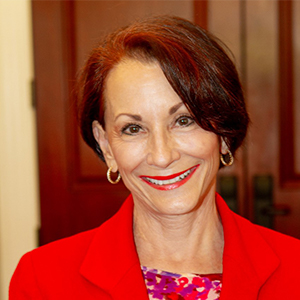A map of the land is something that tells you what it is like around you and helps you move around effectively and reach your destination. Some of us may still use a road atlas or printed maps while others, the many apps and GPS models that are available. A map of future leaders helps in the same ways but instead of giving you insight and guidance into places; it does so for your nonprofit’s future leaders.
As a leader today of your nonprofit, you have the days, weeks, and months ahead mapped out. Hopefully, this includes mapping the next generation of leadership for your nonprofit. You will feel better about having to do this if you understand that failing to do adequate planning jeopardizes the future of the nonprofit. Think of it this way, if you do not have a plan, any map will get you somewhere. But is that where you want your nonprofit to be?
You have a high pay off challenge before you develop your map of the next generation of leadership. From here on, we will refer to that map as a succession plan. On this road trip, we will explore three destinations for mapping future leaders; recruit, retain, and develop top talent!
Recruit
This first component will require you to conduct a detailed assessment of your current staff. As you do so consider what digital literature has to say about next generation leadership. The following provides some insight into the qualities of staff members you need to consider.
Rebecca Lea Ray, a member of the Forbes Coaches Council, shares in her article Developing The Next Generation Of Leaders, “In a recent survey my company, The Conference Board, conducted a survey that asked over 1,400 C-suite executives about their top business challenges for 2019, they ranked developing next-generation leaders as their third-biggest internal concern. Moreover, a related issue – attracting and retaining top talent – was their first.” Although this survey was comprised of for-profit businesses, the same issues can be assumed to apply to nonprofits. Rebecca goes on to say that the next generation of leaders need to be comfortable with ambiguity, emphasize emotional intelligence and double down on digital. These three are compelling in their range of competencies from soft to hard skills from things that can be readily taught and learned to those that need to be developed through experience.
As put forth in an article from Martin Roll, Next Generation Leadership: How To Enhance Performance
The six critical factors of success among next generation of leaders are:
- Purposeful: Characterized as one with unwavering focus, clear personal vision, and clarity of thought
- Resilient: Effectively and efficiently manages change, always stays ahead of the curve, and has a strong character
- Networks: Constantly networks, builds networks of leaders, cascades relevant messages and change
- Long-term lens: Has a futuristic vision, always thinks, plans, and executes strategically
- Adapts: Manages disruptions effectively, continually innovates and constantly evaluates priorities
- Value orientation: Is driven by values / beliefs, principled and strongly believes and practices ethical behavior
If your assessment of current staff members aligns with the talents of the next generation of leadership, you can move directly to retaining and developing those individuals. If you find from the assessment that you have gaps in future leadership, you must consider if you can develop them with a well thought out plan or if you will need to recruit personnel from outside your nonprofit.
Develop
- Training should encompass soft skills (e.g., emotional intelligence) and technical skills (use of nonprofit software programs) required to lead people and manage projects.
- Education: a degree, coursework or relevant certifications as defined by your nonprofit’s leadership position descriptions.
- Projects: a cross section of projects that provides a skill set that ranges across your nonprofit’s operations (fundraisers, grant writing, audit preparation, personnel management, etc.).
- Network: develop, manage, and grow connections within the nonprofit sector and community wide.
The development of your next generation of leaders should be captured in a succession plan. This plan identifies each employee you have determined will be part of the next generation of leaders in your nonprofit. It will include their development needs over a timeline. The succession plan should be reviewed by the nonprofit leadership, including the Board of Directors. This enables current leadership to monitor progress and is needed for each person identified to take on additional leadership responsibilities in the coming years.
Retain
You have identified or hired staff positioned to become your nonprofit’s next generation of leaders. And you have a strong development plan in place for each of them to be exercised over the next several years. You have and will be making a considerable investment in them but how do you assure yourself that they will remain with your nonprofit?
A retention strategy is crucial to your succession planning. Keep in mind what Career Builder has documented about job longevity. For Gen Z’s (age 6-24) average length of time spent at a job is 2 years and 3 months. For millennials (25-40) that figure is 2 years and 9 months. You have the challenge of retaining Gen Z’s and millennials. Actions you can take to encourage retention among key employees include:
- Provide feedback personally and regularly
- Recognize and reward accomplishments and achievements
- Share your goals for them to take a position of leadership with your nonprofit
- Ask for input on your employee’s development plan
- Offer competitive compensation and benefits
You may not be successful in keeping all the employees you hope will have a future leadership role so have a few more you are developing than you may need. If any of your future leaders decide to take another job, do not count it as a loss but potentially as outside development. Talk to the person who is leaving about coming back to the nonprofit at a future time and stay in contact with them in the new position.
Future leaders in most cases do not simply appear out of nowhere prepared to take a position of leadership in your nonprofit. The best approach is to proactively raise leaders from the people around you. This growth includes training, project assignments, network development, and educational opportunities. Having a succession plan that captures all of this is vital to the next generation of leadership for your nonprofit. Recognizing the next generation of leaders is very job–mobile and keep this in mind as you plan how your nonprofit will retain them.



